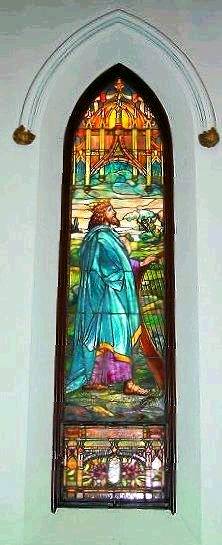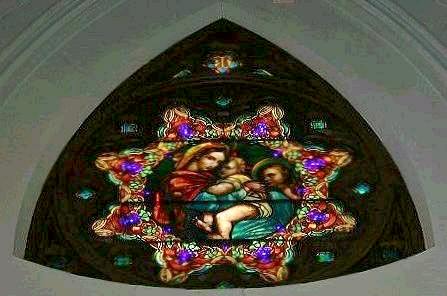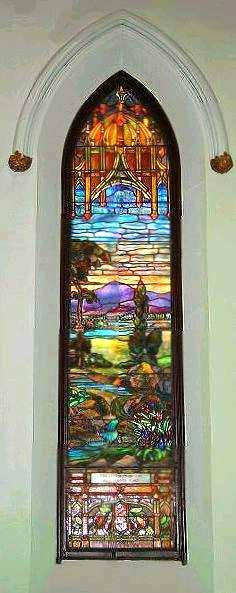Rollstone’s Stained Glass Windows
The stained glass windows at Rollstone are admired by all, but sometimes overlooked. I was asked to write a series of articles about the windows, which I am more than happy to do. The way in which the windows will be described will be iconographical in nature, looking the content and the symbolism, rather than their historical details, which can be found in Solon Wales’ book on the stained glass windows of Rollstone Congregational Church.
To begin this series, one should understand how the stain glass windows in churches began. The first church to have utilized stain glass windows was Saint Denis in France. This church was being rebuilt in the early part of the middle ages and the Abbott, whose name was Suger had the windows tinted different colors. Abbott Suger believed that by the windows illuminating the chapel with different colors would be a visual representation of the divine light o f God. Eventually the windows became embedded with Christian images; in essence the windows became didactic in nature, letting the mostly illiterate population visually identify with stories and people from the Bible.

With this albeit brief history aside, the first window in the series is the Newton window depicting Raphael’s Madonna della Sedia or Madonna of the Chair which Raphael painted circa 1514. This window, although small, is typical with Gothic and Neo-Gothic architecture. During the Middle Ages there was an increased interest with the Virgin Mary and her role in the Christian religion, this took place mainly in France where Gothic architecture took a stronghold. Cathedrals were dedicated to her, thus many Cathedrals named Notre Dame arose. To honor Mary, they began using a large circular window in the very front of the building, called the Rose or the Medallion Window. This usually depicted the life of Mary, her sorrows, her triumphs, and her attributes.
In keeping with this tradition, Rollstone too has its window depicting the Virgin Mary. Ours is the depiction of Mary, the Christ child and St. John the Baptist. This theme is not unusual in art. Artists have depicted the theme of the Madonna and Child since the Early Christian times. However, if one looks at early representations, one would see Mary and Christ looking stiff, disengaged from the viewer, and extremely 2 dimensional.
Raphael’s Madonna, is a soft, gentle and loving mother. She holds her child tightly against her. She gazes towards the viewer with a serene look upon her face, while the Christ child looks not towards the viewer, but through them as if he as seeing into the future, and what it will ultimately bring. An infant John the Baptist, hands clasped as if praying, holds the cross, symbol of Christ’s martyrdom.
When looking at works of Christian art, one can almost instantly pick out symbols, such as a cross or a dove and know what they represent. Colors also play an important part in the telling of a “visual’ Christian story. The colors used in the original painting are quite vivid and harmonious, giving the painting a very calm and warm feeling. Raphael has the Virgin dressed in contemporary renaissance garb, but wearing a headdress that would be customary in her time. The upper part of her dress is green, which symbolizes nature, spring emerging from the barren winter, and rejuvenation and red, which is symbolic in Mary’s case of love. Red is also used as a color for those who were persecuted for their beliefs. The mantle of Mary’s dress is blue, which symbolizes the heavens and heavenly love. It is also a symbol of truth, for after the clouds roll away the heavens appear as if truth is being unveiled. Additionally, blue has become the traditional color of the Virgin Mary, and is used quite prolifically in scenes from her life.
The Christ child is dressed in gold, a variant of yellow, which is a symbol of divinity. However, during the Renaissance many artists utilized the color gold when depicting those individuals who were born into the Jewish religion and converted to Christianity. John is wearing a hair shirt, which goes back to the Bible and can be found in the book of Mark where John is described as wearing a shirt, made of camelhair while baptizing people when he was in the wilderness.
As stated in the beginning of this article, this is the first in a series of article about the stain glass windows here at Rollstone. I hope you have enjoyed this, if you have any questions, please feel free to ask or email me at rolandsmom01@gmail.com and I will do my best to answer them.
Views: 1173


